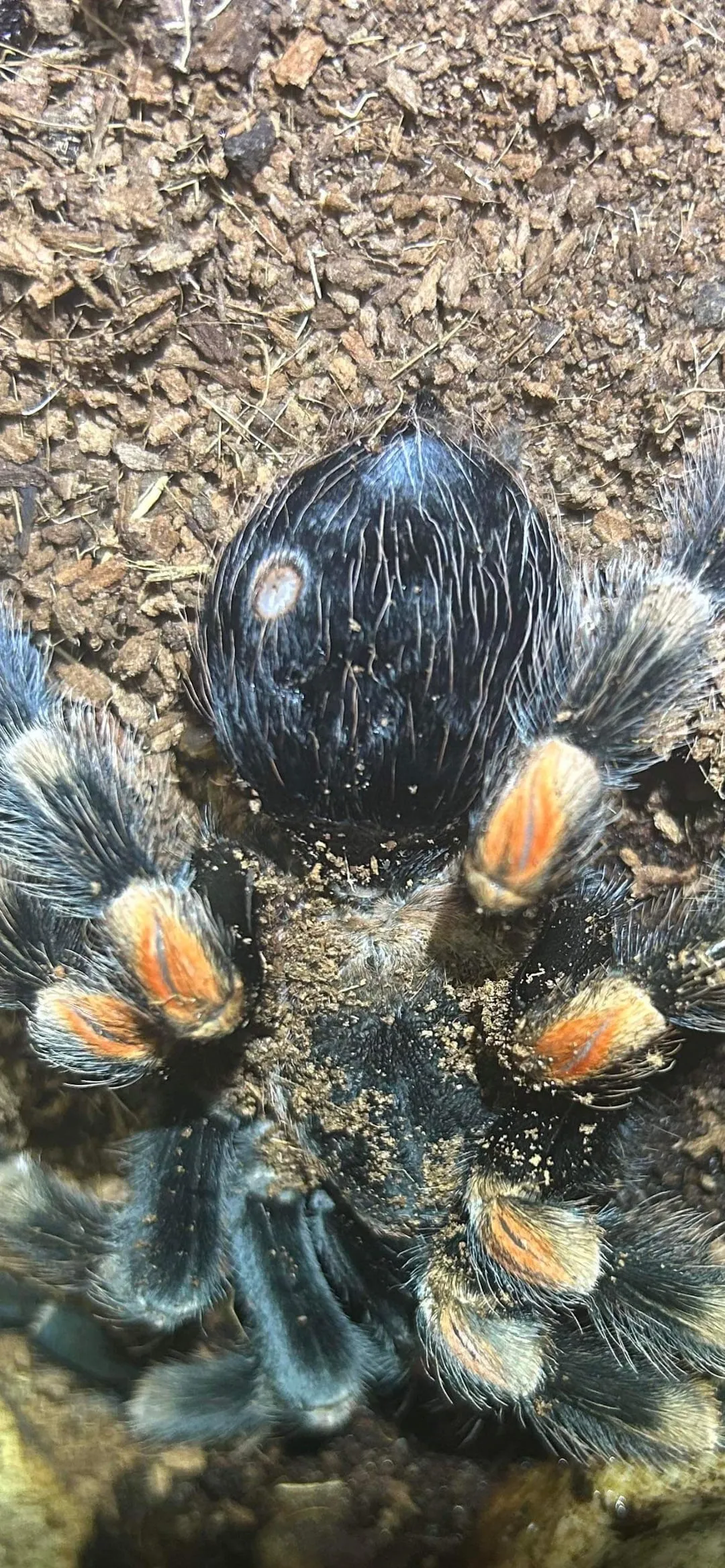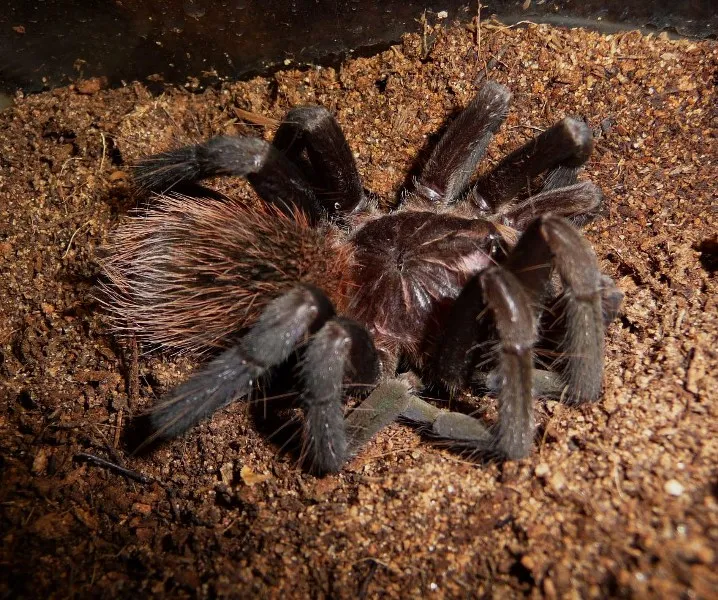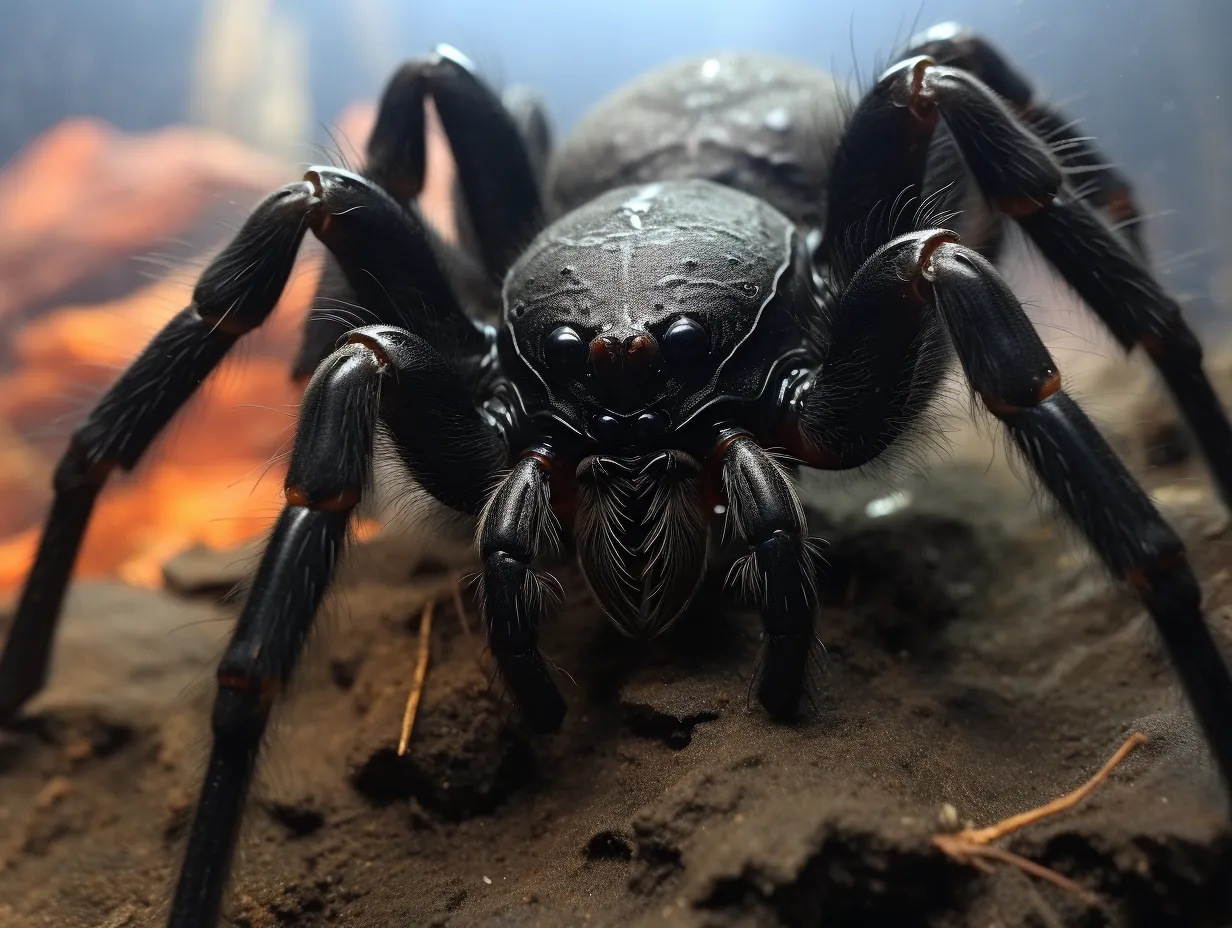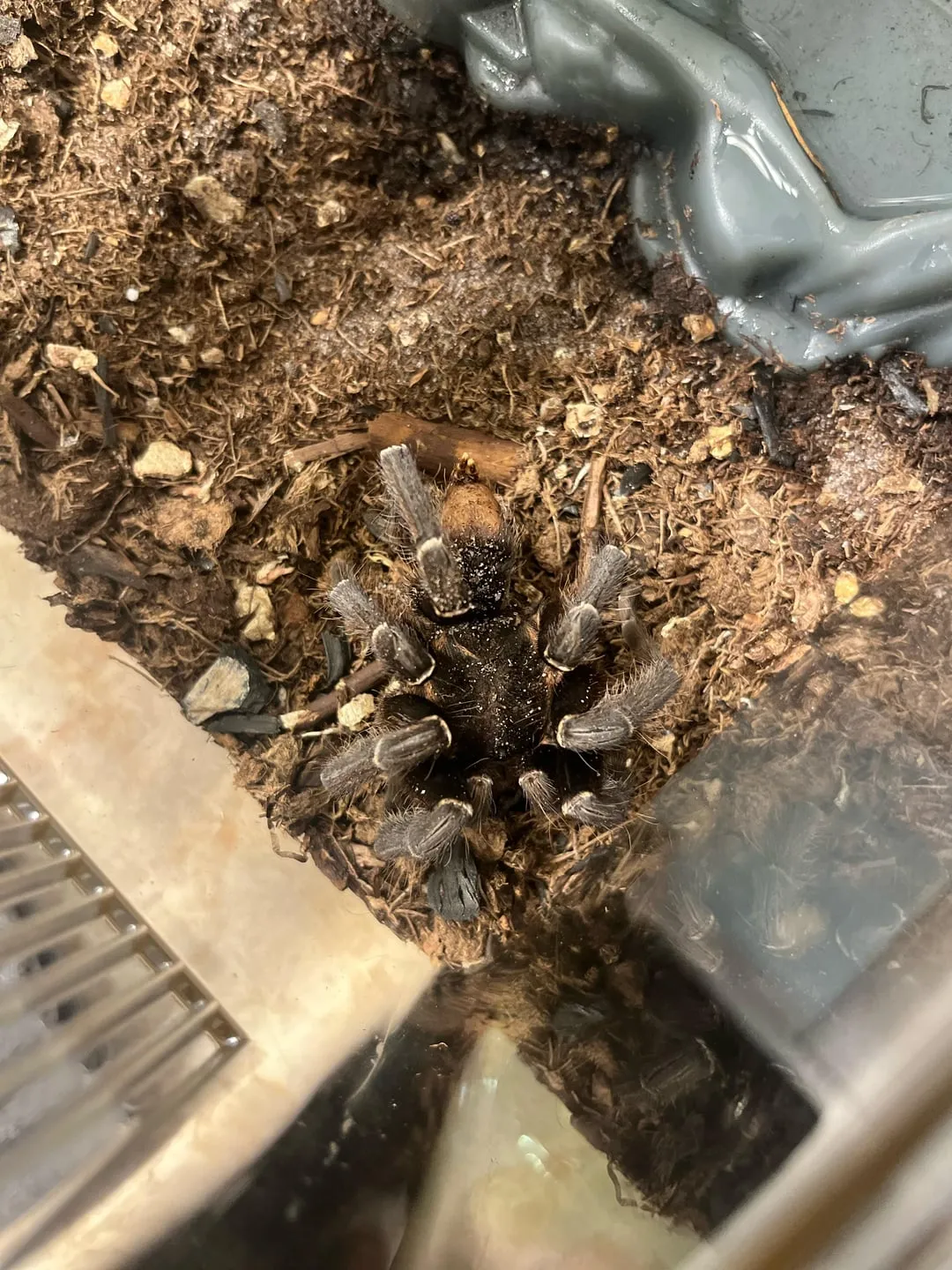Owning a pet tarantula can be a fascinating experience, but it also comes with the responsibility of caring for a creature whose health can be delicate. Recognizing the signs of a dying tarantula is crucial for providing the best possible care and, in some cases, making difficult decisions. This article will guide you through the key warning signs that your pet tarantula may be nearing the end of its life, helping you understand what to look for and what actions you can take.
Identifying the Signs of a Dying Pet Tarantula
Several indicators can suggest that a tarantula’s health is declining. Observing these signs early can make a significant difference in your ability to provide comfort and, in some cases, address underlying issues. It’s essential to be observant and familiar with your tarantula’s normal behavior to quickly spot any deviations that may indicate a problem. Regular health checks, including examining the tarantula’s overall appearance and behavior, are key to ensuring a healthy life for your pet.
Loss of Appetite in Pet Tarantulas
One of the earliest and most noticeable signs of a problem is a loss of appetite. Tarantulas are opportunistic eaters, and a healthy tarantula will readily consume prey when offered. A sudden refusal to eat, especially if it persists for more than a few weeks, can be a cause for concern. This can indicate that the tarantula is experiencing internal health issues or is nearing the end of its lifespan. The reasons behind the loss of appetite can be diverse, spanning from environmental stress to a sign of an underlying illness. The first step in handling this is to examine the eating habits and to understand the root of the issue.
Understanding the Importance of Feeding

Feeding is fundamental for a tarantula’s overall well-being. A consistent diet helps maintain energy levels and supports the molting process. Healthy tarantulas are typically voracious eaters, particularly after molting. They consume insects, such as crickets or mealworms, which give them the essential nutrients they need. Proper feeding habits are crucial for helping your tarantula live a long, healthy life. Always ensure that the prey items are appropriate in size and are free from any pesticides or chemicals that could harm your tarantula.
Recognizing Changes in Feeding Habits
Observe your tarantula’s feeding patterns closely. If it stops eating, or if it shows a lack of interest in food, it could indicate a problem. Try offering different types of prey to see if there’s a preference. Sometimes, a tarantula may refuse a certain type of food. However, consistent refusal, even when presented with various options, should be taken as a potential sign of a health issue. Also, consider the tarantula’s age and the frequency of feeding, but any deviation from the usual behavior warrants investigation.
Lethargy and Inactivity
A normally active tarantula that becomes lethargic and spends an excessive amount of time in one place is another warning sign. Tarantulas are typically active, especially at night, and they will move around their enclosures. This change in behavior can be caused by health issues, but also by environmental factors. This change might be slow, and noticing it might be difficult if the tarantula is not observed very often. Always be familiar with your tarantula’s routine, and if it is not what you are expecting it to be, this is the first thing you need to address.
Identifying Abnormal Movement

Monitor your tarantula’s movement patterns. Is it moving slowly? Does it seem uncoordinated or have difficulty getting around? These actions might indicate nerve problems or other internal issues. Look for any tremors, paralysis, or unusual positioning of the legs or body. Compare it with a healthy tarantula’s usual activity, and any obvious deviation may be a cause for concern. In a healthy tarantula, these problems will not be present, so careful observation is necessary.
Understanding the Tarantula’s Natural Behavior
Knowing your tarantula’s natural behavior is key to spotting abnormalities. Tarantulas have specific behaviors related to their species and the environment in which they live. Some species are more active than others, and knowing this will help you quickly spot changes in their behavior. Researching your tarantula’s specific needs will help in identifying early warning signs of illness. This knowledge is essential for quick intervention if your pet is sick.
Physical Deterioration
Physical changes, such as a dull appearance, unusual growths, or visible injuries, are also signs of a tarantula’s declining health. This is a critical factor, as it gives you visual indicators that you cannot ignore. Physical deterioration is not normal, and it is important to take action when observed. It is recommended that you know the different stages, so it is easier to notice any changes in your pet’s appearance.
Examining the Tarantula’s Exoskeleton

The exoskeleton should be intact and shiny. Any dents, lesions, or discoloration should be investigated. The exoskeleton’s condition is a direct indicator of the overall health of the tarantula. Make sure to inspect your pet regularly, as a damaged exoskeleton can be an entry point for infections. The tarantula’s health depends on your awareness, so a complete inspection is necessary to maintain its well-being.
Recognizing Changes in Color and Appearance
A healthy tarantula has vibrant colors. Look for any fading, unusual spots, or changes in the overall appearance. Changes in color can indicate various health issues or stress. If the colors look faded or muted, there might be a problem. Different tarantula species have different coloring patterns. Make sure to understand your specific tarantula and its normal coloration. Any deviation from the expected color can indicate health problems, so it is important to identify any changes early.
Difficulty Molting
Molting is a natural process where tarantulas shed their exoskeletons to grow. Difficulty or failure to molt is a serious sign. This can be a sign of a significant health problem, and it’s important to handle it with caution. In this case, it’s crucial to know what to expect and to take action when problems arise. Molting is a sign of a healthy life, and problems during this process can be an early warning of a disease.
Understanding the Molting Process

During molting, the tarantula becomes inactive and vulnerable. The process can take several hours or even days. Healthy molts result in the tarantula shedding its old exoskeleton and emerging with a new one. The tarantula’s behavior changes, and it becomes fragile during this period, making it very important to leave the tarantula alone. Make sure that the environment is adequate, without unnecessary disturbances. Proper humidity is also a must for the molting process.
Identifying Signs of a Failed Molt
A failed molt, where the tarantula cannot fully shed its exoskeleton, can be fatal. Signs include parts of the old exoskeleton remaining attached, particularly around the legs or fangs. This can also be a sign of environmental stress, like insufficient humidity or other conditions that make the molting more difficult. Failure to molt means the tarantula is in great danger, and it is critical to get help right away. Sometimes the old exoskeleton can restrict movement and lead to other infections.
Changes in Posture
Posture can also give you a good indication of your tarantula’s health. Changes in posture can be a sign of discomfort, illness, or an impending molt. Abnormal posture is not normal, and it should be addressed quickly, as the root cause might be harmful. Knowing what to expect from your pet’s usual behavior is important, as any deviation might mean that your pet is ill.
Understanding Normal Tarantula Posture

A healthy tarantula typically holds its legs in a relaxed position. Its body posture is stable, and it moves around with ease. The posture may vary depending on the tarantula’s species and environment, but you should be familiar with the natural behaviors that your pet usually exhibits. A healthy posture is essential to assess the general health of your pet. Any unusual posture may be a sign of distress or an underlying issue.
Identifying Abnormal Posture
Abnormal postures include legs held in unusual positions, tremors, or the inability to stand properly. These postures might indicate problems, such as paralysis, injury, or other health problems. Look for legs tucked under the body, or the tarantula lying on its back or side for a long period. These kinds of postures are not normal, and they indicate that your tarantula may be dying. Always be ready to help your pet if you see any changes, as it might be the difference between life and death.
What to Do if Your Pet Tarantula is Dying
If you recognize any of these warning signs, prompt action is required. Knowing how to act in this situation is crucial. There are actions you can take to address the issues. Remember that the actions may include getting veterinary assistance or making difficult decisions about the care of your pet. Being prepared for any situation is the most important aspect of keeping your tarantula healthy. Knowing what to expect will help you make important decisions regarding your pet’s welfare.
Consulting a Veterinarian

A veterinarian specializing in exotic animals is your best resource. They can diagnose the underlying cause of your tarantula’s condition. Having a vet ready to help means you can avoid many of the problems that may appear. It’s important to remember that not all vets are familiar with tarantulas, so you may need to find a specialist. Be ready to provide detailed information about your tarantula’s history, the conditions it lives in, and the symptoms you have observed. Your veterinarian can help you determine the best course of action.
Finding a Veterinarian Experienced with Invertebrates
Finding a vet experienced with invertebrates is essential. Not every vet is familiar with tarantulas or other invertebrates. Do some research and ask for recommendations from other tarantula owners. Look for vets with experience and equipment. Be prepared to travel to a vet. Make sure the veterinarian has a good reputation and experience in handling exotic pets. If you have found a vet, always keep contact with them, and keep their contact information at hand.
Preparing for the Veterinary Visit
Before visiting the vet, gather as much information as possible about your tarantula’s symptoms, including the duration and severity of the problem. Take notes, and provide clear observations about your pet’s behavior and habitat. The veterinarian will need a detailed history to give a diagnosis. Bring the tarantula’s enclosure. This allows the vet to examine the environment. This information will help your vet make a correct diagnosis. Preparing everything beforehand helps the vet to do a good job.
Providing Proper Care
Providing proper care means ensuring your tarantula’s environment is optimal. This includes the proper temperature, humidity, and substrate. Keep the environment clean and avoid using harmful chemicals. Providing proper care can help improve your tarantula’s comfort. Even if the tarantula is sick, a suitable environment can help make your pet more comfortable. Monitor the environment and make any adjustments to provide a good atmosphere.
Creating an Optimal Environment
The right environment is critical for your tarantula’s health. The enclosure should provide a comfortable space with adequate ventilation. Ensure the enclosure is of a suitable size and well-maintained. Monitor the temperature and humidity levels closely and adjust them as needed. Provide a hiding place, such as a hide or a piece of cork bark, which can offer security and reduce stress. A good environment is an important aspect of keeping your tarantula alive and well. The tarantula’s health depends on a good environment.
Adjusting Temperature and Humidity
Temperature and humidity are very important. These factors affect your tarantula’s well-being. The temperature should match your tarantula’s species requirements. Most species need temperatures between 75–85°F (24–29°C). The humidity levels should also be appropriate for the species. Using a hygrometer to measure humidity can help to keep track. Proper temperature and humidity are important for good health, and they reduce stress on your tarantula. Maintaining these conditions is crucial to make your pet’s environment as comfortable as possible.
Humane Euthanasia
Sometimes, despite your best efforts, a tarantula’s condition will not improve, and it may be suffering. In these cases, humane euthanasia might be the most compassionate option. It is a difficult decision, and it is important to discuss it with a vet. Always consider your pet’s quality of life. Euthanasia is an important step when you feel the tarantula is suffering. Discuss it with a vet, and be sure to give your pet the best care possible. Remember that the decision should be made with compassion for your pet.
Understanding When Euthanasia May Be Necessary
Consider euthanasia if your tarantula is in severe pain, has no chance of recovery, or its quality of life has significantly declined. The vet should assess the situation. Euthanasia is a way to prevent unnecessary suffering. It is a difficult decision, but it may be the most humane choice. The vet will help you decide. It is essential that you have a conversation with your vet, so you are sure to make the right decision. The ultimate aim is to provide comfort for your pet.
Finding a Veterinarian to Perform Euthanasia
Not all vets offer euthanasia services for invertebrates. Ask your vet if they can provide euthanasia or if they can refer you to someone who can. Make sure the vet uses a humane method. The veterinarian can provide a peaceful passing for your pet. Your vet will guide you through the procedure and discuss the options. Always be prepared to discuss your options with your vet and make the right choice for your pet. Make sure you know that your pet will not suffer, and that they will be at peace.
Caring for a pet tarantula is a fulfilling experience, but it also means being prepared for all aspects of their life, including the end. By knowing the warning signs, seeking professional help when needed, and making difficult but necessary decisions, you can ensure the comfort and well-being of your pet tarantula throughout its life. Remember that your attentiveness and care can make all the difference in your pet’s life.
